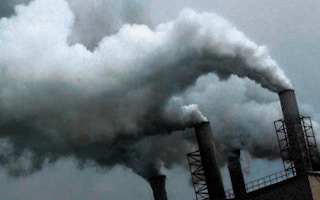After studying chemistry at Shanghai’s Fudan University, Jane Chuan and Wang Youqi pursued doctorates in the US. She got hers from what’s now the University of Buffalo in 1988, the year they married. Wang graduated in 1994 from the California Institute of Technology.
A few years later, they were cashing in stock options in Silicon Valley companies they’d co-founded, one of which created a luminescent chemical to store X-ray images. Their home in Atherton, California, had seven bedrooms, 11 bathrooms and an acre of land, Bloomberg Markets magazine reports in its May issue.
By 2000, Wang was convinced that the research methods he was patenting could help stave off the environmental nightmare he saw unfolding during return visits to his homeland. China, already reeling from pollution, was poised to more than double coal consumption during the decade. That would choke cities with smog and exacerbate global warming.
Chuan, 61, bespectacled and smiling in her white lab coat, remembers pounding the pavement to pitch US investors on cleaning China’s coal. Only a handful of California’s Internet- obsessed venture capitalists bit, she says.
Leveraging brainpower
So, in 2003, the couple moved back to Shanghai, the city from which they had emigrated 18 years earlier. They crammed into a 1,100-square-foot (100-square-meter) apartment that was hot in the summer, cold in the winter and crowded with two teenage children home from boarding school on weekends.
By 2006, Wang had his breakthrough in sight. He’d found a way to unlock a chemical stored in the coal that was poisoning his country and to put it to an unlikely use: cleaning China’s air.
The catalyst he discovered speeds reactions that convert methanol extracted from coal into a substance called dimethyl carbonate. By adding dimethyl carbonate to diesel fuel, Wang now plans to cut 90 percent of black carbon soot from the tailpipe emissions of 1,800 Shanghai buses by year-end.
“We said, ‘Let’s go to China, where we can leverage brainpower that’s cheaper and do something important for mankind,” says Wang, 55, a wiry, self-described workaholic who, on this January day, is taking a break from his laboratory to greet visitors in a conference room at Yashentech, the couple’s Shanghai-based company.
Hooked on coal
Yashentech’s emissions-busting effort is one way in which China is racing to solve its clean-energy riddle: How can a country that’s hooked on coal mitigate environmental damage from the dirtiest of fossil fuels?
China passed the US as the top carbon polluter in 2007; it now emits more than the US and India combined, according to the US Energy Information Administration.
Yet with 1.3 billion people, power-hungry industries and scant oil or natural gas, it has no immediate alternatives to coal for fueling its economy. China gets 70 percent of its energy from coal, three times the US figure. It even converts coal into diesel fuel and ammonia that’s used for making fertilizer.
After consuming as much coal as did the rest of the planet combined in 2010, China still can’t muster enough electricity to avoid blackouts or accelerate the rise of its western provinces out of poverty, says Zhao Gang, director of a research institute at Beijing’s Ministry of Science and Technology.
By 2025, with 250 million more Chinese projected to be living in cities, China’s share of global carbon pollution will jump to 30.3 percent from 26.8 percent this year, the EIA says.
Meat, fish, air
China can’t quit coal. But with efforts from entrepreneurs, mining enterprises and electricity giants, it’s ready to tackle its addiction, says Zhou Fengqi, senior adviser to the Energy Research Institute of the government’s National Development and Reform Commission.
This is a partial excerpt. Read the full article on Bloomberg.

















